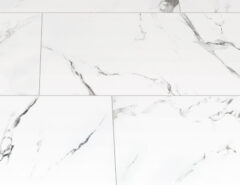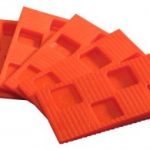Radiant floor heating is a type of heating that has become more and more popular over the last few decades, both in homes and commercial settings. During the same period of time, laminate flooring has become extremely popular as well. Therefore, there has been a rapid increase in the installation of laminate radiant floor heating across the country over the last few decades. The process of installing laminate radiant floor heating is not too complex, and the following is a simple guide to installing the laminate flooring over the radiant heating.
First, a quick overview of the benefits of laminate radiant floor heating is in order. Radiant heating is becoming very popular due to its energy efficiency. Radiant heating does not heat the air directly like most other heating sources. Instead, it radiates out in all directions, which is why radiant heat is often referred to as being omni-directional. This means that a floor using radiant heating needs a much lower temperature to heat the same space as a conventional heating source, which results in huge energy savings.
When installing laminate flooring over the radiant heat source, there is one very, very important factor to take into consideration. This important factor is to make sure that the slab and the subfloor underneath the laminate flooring is completely dry. If the installer fails to ensure that they both the slab and subfloor are completely dry, then the moisture from the slab and/or subfloor will migrate up to the laminate flowing as soon as they heat up. This can result in expansion, shrinkage, cracking and warping of the brand new laminate flooring, which is extremely frustrating and a waste of time and money.
To ensure that the subfloor and slab are completely dried out before installing the laminate flooring on top, it is necessary to turn on the radiant heating system after the slab and subfloor are installed. The radiant heating needs to be left on for five or six days in order to make sure that the subfloor is completely dried out. Only then can the laminate flooring be installed. If the slab is new as well (if it has been in place for less than 60 days) then the radiant heating needs to be run for at least a month for the slab to completely dry out. As you can see, it takes much longer to dry out the slab than the subfloor.
Once the entire laminate radiant heat flooring system is in place, care needs to be taken in order to avoid damaging it. When the end of winter comes, the radiant heat will be shut off. At this time, moisture from the surface will migrate once again into the subfloor and the slab. More and moisture will accumulate in the subfloor and the slab over the spring, summer and early fall. This moisture will then rapidly be released up into the laminate flooring when it is turned on in the late fall or winter. This will result in warping, cracking, shrinkage or expansion of the laminate flooring.
In order to avoid this happening, it is a good idea not to simply turn on the radiant heating 24 hours a day at the beginning of the cold weather. It is a good idea to turn it on for a few hours a day a month before the expectation of the first cold days of the year, and then gradually add an hour more a day of radiant heating. In this way, the moisture will gradually be expelled from the slab and subfloor. This will make sure that the laminate flooring does not become damaged by moisture and stays as beautiful as when it was installed.


















